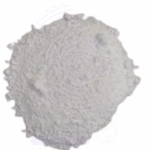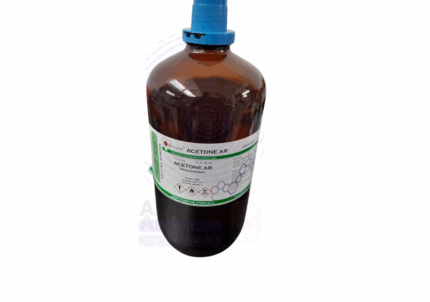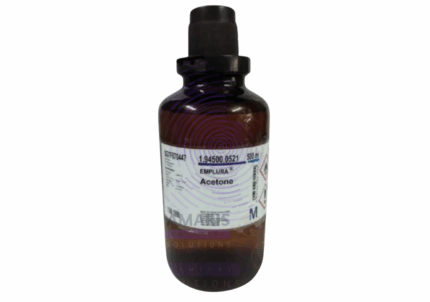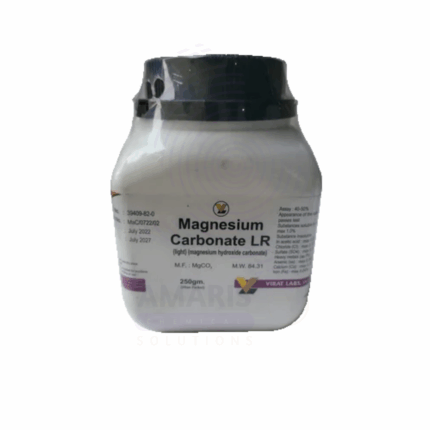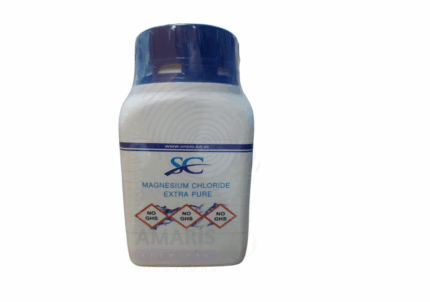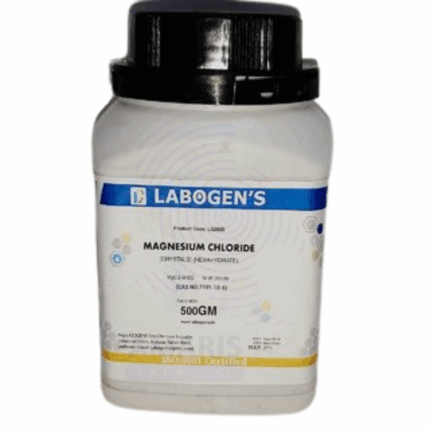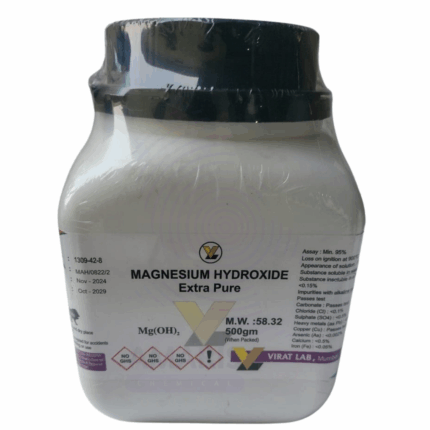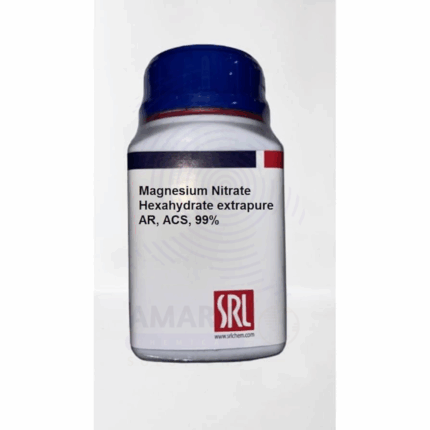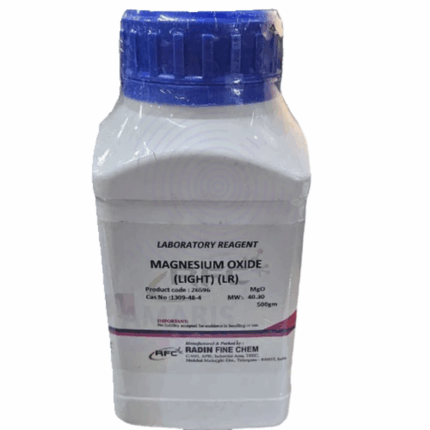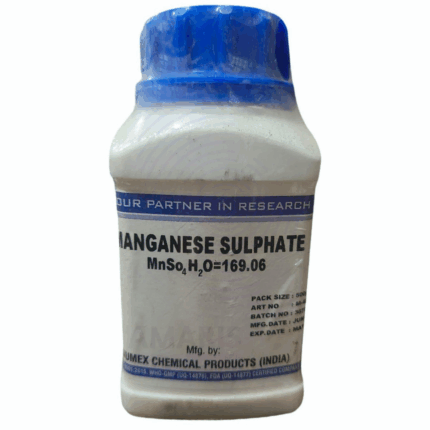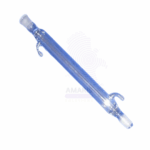
Maltose Extra Pure
$ 23.43 Original price was: $ 23.43.$ 23.32Current price is: $ 23.32.
Maltose Extra Pure is a disaccharide composed of two glucose units, commonly known as malt sugar. This extra pure grade ensures exceptional quality and consistency, making it ideal for use in biochemical research, fermentation studies, and laboratory analysis. In the food industry, maltose is valued for its mild sweetness and is often used in brewing, baking, and confectionery to promote fermentation and enhance flavor. It also plays a role in energy metabolism studies and is frequently used as a carbon source in microbiological media. Its stability and solubility in water make it easy to incorporate into various formulations, offering a dependable ingredient for scientific and industrial use where high purity is essential.
Maltose Extra Pure
Primary Uses
- Carbohydrate Analysis:
- Used as a standard sugar in chromatographic and spectrophotometric studies analyzing disaccharides.
- Fermentation Studies:
- Commonly applied in microbial fermentation experiments to observe how yeast or bacteria metabolize sugars.
Secondary Uses
- Enzyme Activity Assays:
- Serves as a substrate for maltase/amylase activity in enzymology studies.
- Cell Culture Nutrient:
- Occasionally used as an energy source in specific microbial or plant cell cultures.
- Osmotic Agent in Biological Research:
- Employed in studies requiring precise control of osmotic pressure in solutions.
| PACK SIZE |
100 grams Plastic Tin |
|---|
1. Basic Identification Attributes
- Chemical Name: Maltose
- Synonyms: Maltobiose, 4-O-α-D-Glucopyranosyl-D-glucose
- CAS Number: 69-79-4
- Molecular Formula: C₁₂H₂₂O₁₁
- Molecular Weight: 342.30 g/mol
- Appearance: White crystalline powder
- Odor: Odorless
- Solubility: Soluble in water
- Grade: Extra Pure
2. Safety & Hazard Attributes
- GHS Classification: Not classified as hazardous under GHS
- Hazard Statements: None applicable
- Precautionary Statements:
- P280: Wear protective gloves and eye protection when handling powder
- P264: Wash hands after handling
- Personal Protective Equipment (PPE):
- Lab coat
- Protective gloves
- Safety goggles
- Dust mask if handling large quantities of powder
- First Aid Measures:
- Inhalation: Move to fresh air; rinse mouth and nose if irritation occurs
- Skin Contact: Wash off with soap and water
- Eye Contact: Rinse with plenty of water; seek medical advice if irritation persists
- Ingestion: Rinse mouth; not expected to be harmful in small quantities
- Fire Hazards:
- Non-flammable, but fine powder may form combustible dust-air mixtures
- Use water spray, foam, dry chemical, or CO₂ to extinguish
3. Storage & Handling Attributes
- Storage Conditions:
- Store in a tightly sealed container
- Keep in a dry, cool, and well-ventilated area
- Protect from moisture and direct heat
- Handling Tips:
- Avoid inhalation of dust
- Use clean utensils to avoid contamination
- Handle under dry conditions
4. Laboratory Applications
- Primary Uses:
- Carbohydrate metabolism studies
- Enzyme activity assays (e.g., amylase activity)
- Standard reagent for reducing sugar analysis
- Secondary Uses:
- Osmotic agent in cell biology experiments
- Carbon source in microbial culture media
- Biochemical research in saccharide structure and function
SAFETY PRECAUTIONS
Personal Protective Equipment (PPE):
- Wear a lab coat, nitrile gloves, and protective goggles.
- Use a dust mask or ensure adequate ventilation if powder is airborne.
Handling:
- Avoid inhalation of dust and contact with skin or eyes.
- Handle with care to minimize dust generation.
- Wash hands thoroughly after use.
Storage:
- Store in a cool, dry, and well-ventilated area.
- Keep the container tightly sealed to prevent moisture absorption.
- Protect from direct sunlight and incompatible materials such as strong oxidizers.
FIRST AID MEASURES
Inhalation:
- Move to fresh air.
- Get medical attention if respiratory symptoms occur.
Skin Contact:
- Wash thoroughly with soap and water.
- Remove contaminated clothing and seek medical advice if irritation develops.
Eye Contact:
- Rinse immediately with plenty of water for several minutes.
- Remove contact lenses if present.
- Seek medical attention if irritation persists.
Ingestion:
- Rinse mouth with water.
- Do not induce vomiting.
- Seek medical advice if symptoms arise.
FIRE FIGHTING MEASURES
Flammability:
- Combustible in dust form; may pose a dust explosion hazard in air.
Extinguishing Media:
- Use dry chemicals, foam, or CO₂.
- Water spray can be used to cool surfaces but may spread dust.
Hazardous Combustion Products:
- Can emit carbon monoxide (CO) and carbon dioxide (CO₂) when burned.
Firefighter Protection:
- Use self-contained breathing apparatus (SCBA) and full protective gear.


 Preservatives(food)
Preservatives(food) Flavor Enhancers
Flavor Enhancers Acidulants
Acidulants Sweeteners
Sweeteners Antioxidants
Antioxidants Colorants(food)
Colorants(food) Nutraceutical Ingredients (food)
Nutraceutical Ingredients (food) Nutrient Supplements
Nutrient Supplements Emulsifiers
Emulsifiers
 Collectors
Collectors Dust Suppressants
Dust Suppressants Explosives and Blasting Agents
Explosives and Blasting Agents Flocculants and Coagulants
Flocculants and Coagulants Frothers
Frothers Leaching Agents
Leaching Agents pH Modifiers
pH Modifiers Precious Metal Extraction Agents
Precious Metal Extraction Agents
 Antioxidants(plastic)
Antioxidants(plastic) Colorants (Pigments, Dyes)
Colorants (Pigments, Dyes) Fillers and Reinforcements
Fillers and Reinforcements Flame Retardants
Flame Retardants Monomers
Monomers Plasticizers
Plasticizers Polymerization Initiators
Polymerization Initiators Stabilizers (UV, Heat)
Stabilizers (UV, Heat)
 Antifoaming Agents
Antifoaming Agents Chelating Agents
Chelating Agents Coagulants and Flocculants
Coagulants and Flocculants Corrosion Inhibitors
Corrosion Inhibitors Disinfectants and Biocides
Disinfectants and Biocides Oxidizing Agents
Oxidizing Agents pH Adjusters
pH Adjusters Scale Inhibitors( water)
Scale Inhibitors( water)
 Antioxidants(cosmetic)
Antioxidants(cosmetic) Emollients
Emollients Fragrances and Essential Oils
Fragrances and Essential Oils Humectants
Humectants Preservatives
Preservatives Surfactants(cosmetic)
Surfactants(cosmetic) Thickeners
Thickeners UV Filters
UV Filters
 Fertilizers
Fertilizers Soil Conditioners
Soil Conditioners Plant Growth Regulators
Plant Growth Regulators Animal Feed Additives
Animal Feed Additives Biostimulants
Biostimulants Pesticides (Herbicides, Insecticides, Fungicides)
Pesticides (Herbicides, Insecticides, Fungicides)
 Active Pharmaceutical Ingredients (APIs)
Active Pharmaceutical Ingredients (APIs) Excipients
Excipients Solvents(pharmaceutical)
Solvents(pharmaceutical) Antibiotics
Antibiotics Antiseptics and Disinfectants
Antiseptics and Disinfectants Vaccine Adjuvants
Vaccine Adjuvants Nutraceutical Ingredients (pharmaceutical)
Nutraceutical Ingredients (pharmaceutical) Analgesics & Antipyretics
Analgesics & Antipyretics
 Analytical Reagents
Analytical Reagents Solvents(lab)
Solvents(lab) Chromatography Chemicals
Chromatography Chemicals Spectroscopy Reagents
Spectroscopy Reagents microbiology-and-cell-culture-reagents
microbiology-and-cell-culture-reagents Molecular Biology Reagents
Molecular Biology Reagents Biochemical Reagents
Biochemical Reagents Inorganic and Organic Standards
Inorganic and Organic Standards Laboratory Safety Chemicals
Laboratory Safety Chemicals Specialty Laboratory Chemicals(Special Laboratory Equipment)
Specialty Laboratory Chemicals(Special Laboratory Equipment)
 Demulsifiers
Demulsifiers Hydraulic Fracturing Fluids
Hydraulic Fracturing Fluids Scale Inhibitors(oil)
Scale Inhibitors(oil) Surfactants(oil)
Surfactants(oil) Drilling Fluids
Drilling Fluids
 Dyes and Pigments
Dyes and Pigments Bleaching Agents
Bleaching Agents Softening Agents
Softening Agents Finishing Agents
Finishing Agents Antistatic Agents
Antistatic Agents
 Admixtures
Admixtures Waterproofing Agents
Waterproofing Agents Sealants and Adhesives
Sealants and Adhesives Curing Compounds
Curing Compounds Concrete Repair Chemicals
Concrete Repair Chemicals Anti-Corrosion Coatings
Anti-Corrosion Coatings
 Surfactants(cleaning)
Surfactants(cleaning) Builders
Builders Enzymes
Enzymes Solvents (Cleaning)
Solvents (Cleaning) Fragrances
Fragrances
 Electronic Chemicals
Electronic Chemicals Catalysts
Catalysts Lubricants
Lubricants Photographic Chemicals
Photographic Chemicals Refrigerants
Refrigerants Automotive chemicals
Automotive chemicals Pyrotechnic Chemicals
Pyrotechnic Chemicals
 Biodegradable Surfactants
Biodegradable Surfactants Bio-based Solvents
Bio-based Solvents Renewable Polymers
Renewable Polymers Carbon Capture Chemicals
Carbon Capture Chemicals Wastewater Treatment Chemicals
Wastewater Treatment Chemicals
 Pigments
Pigments Solvents(paint)
Solvents(paint) Specialty Coatings
Specialty Coatings Binders/Resins
Binders/Resins Additives
Additives Driers
Driers Anti-Corrosion Agents
Anti-Corrosion Agents Functional Coatings
Functional Coatings Application-Specific Coatings
Application-Specific Coatings
 Fresh Herbs
Fresh Herbs Ground Spices
Ground Spices Whole Spices
Whole Spices Spice Blends
Spice Blends Dried Herbs
Dried Herbs
 Leavening Agents
Leavening Agents Dough Conditioners
Dough Conditioners Flour Treatments
Flour Treatments Fat Replacers
Fat Replacers Decoratives
Decoratives Preservatives(baking)
Preservatives(baking)
 Plasticizers & Softeners
Plasticizers & Softeners Reinforcing Agents
Reinforcing Agents Adhesion Promoters
Adhesion Promoters Vulcanizing Agents
Vulcanizing Agents Antidegradants
Antidegradants Blowing Agents
Blowing Agents Fillers & Extenders
Fillers & Extenders Accelerators & Retarders
Accelerators & Retarders
